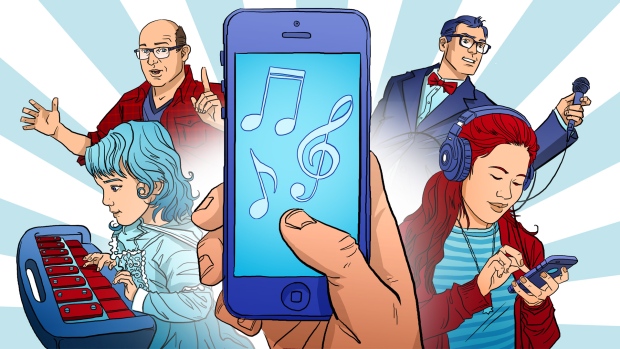
Once upon a time, a reporter’s toolkit included things like a pen, notepad, audio recorder, camera, and a laptop (or typewriter, if you’re real old school). But these days, a smartphone loaded with the right apps is really all you need to get things done (although I’ll never give up my pen and notepad). Here is a list of a few of the best apps for journalists (warning: it’s iOS-heavy), starting with the obvious ones:
Google Maps: Because who actually knows how to read paper maps anymore, am I right? This app is a lifesaver for people who are directionally challenged, like me. You can also plan your routes (including public transportation), so you’re never late for an interview.
Notes (iOS only): One of the default iOS apps, I love it as a no-frills way of jotting down important information or story ideas on the go.
Evernote: Like the iOS Notes app, but more robust. It lets you create notes, audio memos and images that you can access across devices and on your browser. I use Evernote’s other app, Scannable, to scan business cards; it magically turns the scanned cards into contacts that are automatically stored in the Evernote app.
Google Drive/Docs/Sheets: Confession time: I do a lot of my story writing right on my smartphone while sitting on public transportation. Saving it on the cloud makes it easier to pick up right where I left off whenever I’m back at my desk. Also great for any collaborative projects so everyone can work on the same file in real time instead of sending different versions back and forth.
Google Calendar: I’m a big fan of Google products, even if it means they know everything about my entire life. The app is pretttyyy, and along with events and appointments, you can also enter goals and reminders.
Todoist: One of the more popular to-do list apps. It’s actually a great app — you can categorize your tasks, set due dates, and indicate priority levels — but I personally still prefer paper to-do lists.
DocScan: A scanner app is a must, in my opinion, and this is my app of choice (I find Scannable too annoying for anything beyond business cards). You can store your documents on the app or email them to yourself. If you upgrade to the pro version, you can export your files and folders to Google Drive, Evernote, Dropbox or a bunch of other storage apps.
TapeACall: One of the most-recommended apps for recording phone calls (which is surprisingly hard to do on an iPhone). To be honest, I still use the old-school method of connecting my recorder to my mobile phone via stereo cable. Not perfect, but neither am I.
Hindenburg Field Recorder: This is an audio recording app that I see commonly used among radio journalists. I actually once shadowed a reporter who used nothing but a microphone plugged into his iPhone and this app to record interviews and voicers, edit them into a story and FTP the broadcast-ready version back to the office just before air time — all while in the field. I was impressed.
Camera+ (iOS only): As the name implies, this is a camera app, but also so much more. I prefer this over the native iPhone camera app because it gives you manual controls over exposure, ISO, shutter speed and white balance. You can also edit your photos right in the app.
iMovie (iOS only): This is my go-to app for video editing. You get a video track, an audio track, title cards. You can split and trim clips easily, move ’em around on the timeline, detach audio, add transitions, and more. It’s as robust as it needs to be for a quick video, while still being dead simple to use.
What other apps do you find useful for doing your work? I’m always looking for recommendations so share them in the comments!
Image credit: PixaBay







